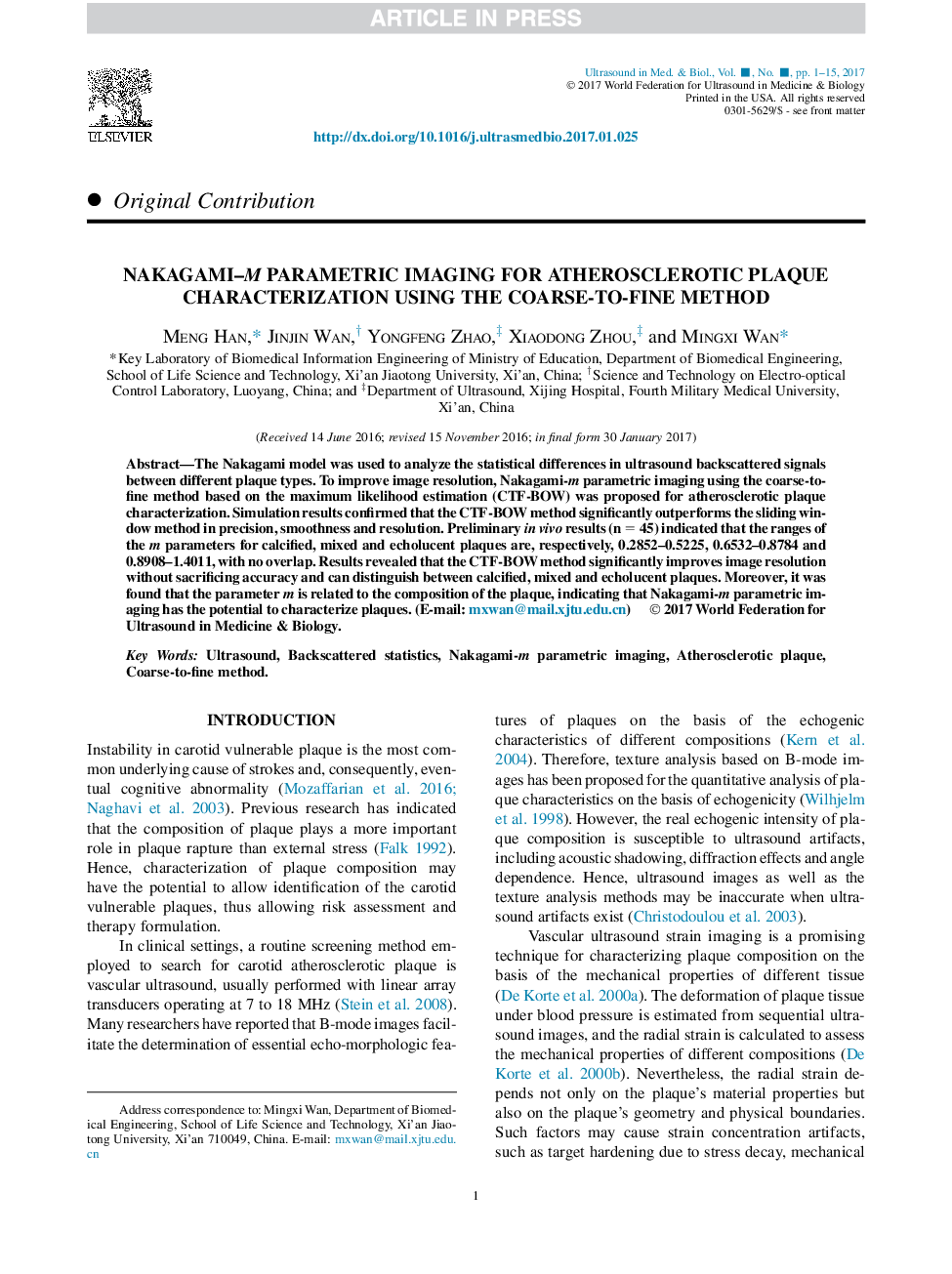| Article ID | Journal | Published Year | Pages | File Type |
|---|---|---|---|---|
| 5485830 | Ultrasound in Medicine & Biology | 2017 | 15 Pages |
Abstract
The Nakagami model was used to analyze the statistical differences in ultrasound backscattered signals between different plaque types. To improve image resolution, Nakagami-m parametric imaging using the coarse-to-fine method based on the maximum likelihood estimation (CTF-BOW) was proposed for atherosclerotic plaque characterization. Simulation results confirmed that the CTF-BOW method significantly outperforms the sliding window method in precision, smoothness and resolution. Preliminary in vivo results (n = 45) indicated that the ranges of the m parameters for calcified, mixed and echolucent plaques are, respectively, 0.2852-0.5225, 0.6532-0.8784 and 0.8908-1.4011, with no overlap. Results revealed that the CTF-BOW method significantly improves image resolution without sacrificing accuracy and can distinguish between calcified, mixed and echolucent plaques. Moreover, it was found that the parameter m is related to the composition of the plaque, indicating that Nakagami-m parametric imaging has the potential to characterize plaques.
Keywords
Related Topics
Physical Sciences and Engineering
Physics and Astronomy
Acoustics and Ultrasonics
Authors
Meng Han, Jinjin Wan, Yongfeng Zhao, Xiaodong Zhou, Mingxi Wan,
